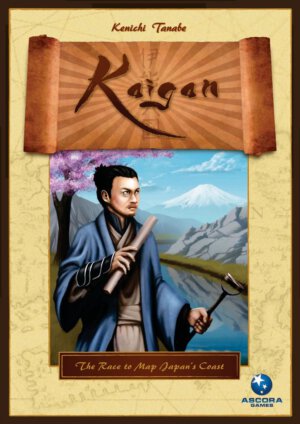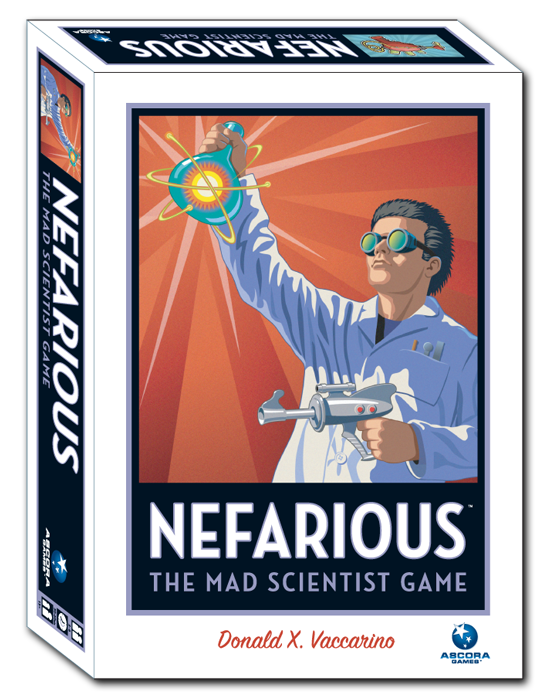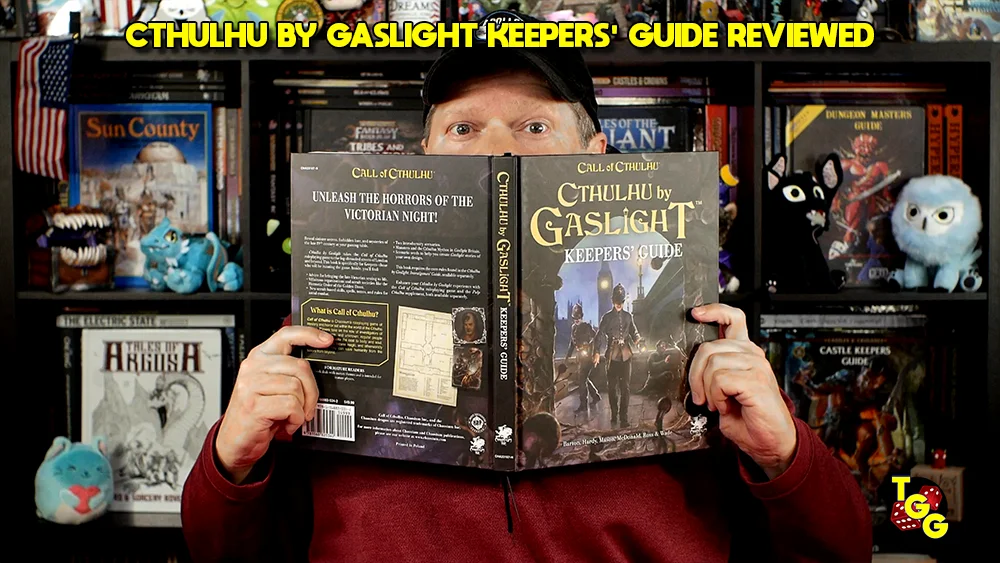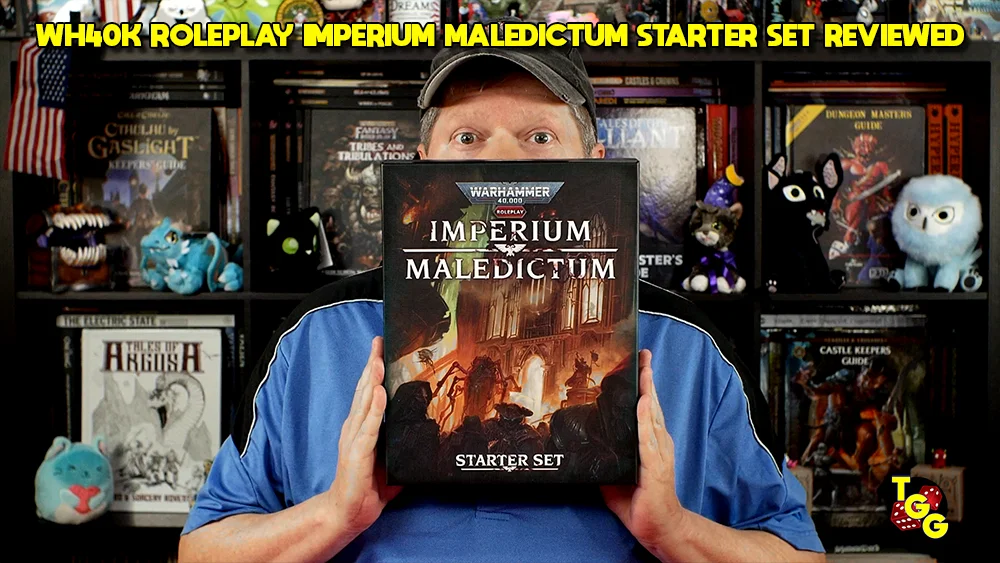Year: 2010
Players: 3-4
Ages: 12+
Playing time: 90 minutes
MSRP: around $45 (availability limited)
Before I launch into the review proper, I’d like to offer a little history of the game. Originally, Japanese designer Kenichi Tanabe self-published the game as Inotaizu. That version had a great reputation, but the game stayed well below the level of most people’s attention. Scott Tepper, a guy who has been around the industry for a while, wanted to start a game company and decided that this was the game he wanted to bring out first. The game debuted at Essen 2010 (you can see his video from the BoardGameGeek booth) and sold well. A few copies made it to the States and were available for about six weeks. A recent note from Tepper says that Ascora had a bit of a delay getting games shipped back to the States, but a small number of copies will be available soon from Boards and Bits. And, apparently, a few are available at the Cat & Mouse Game Store.
On to the game!
Let’s start with the theme. I guarantee you haven’t played this one before: help Tadataka Ino map the coast of Japan, a project he started in 1800. It took him twenty-one years, and it will take you five rounds as an assistant to the astonishingly visionary cartographer. You oversee a small team of surveyors who attract workers who, in turn, gain artistic skill, win governmental support, and travel along the coast to bring honor back to you.
Kaigan has three areas of play, and the interaction between them gives the game a three-part structure that feels classically balanced (ikebana, anyone?). Action cards populate a five by four grid; map tiles (a five by two grid) determine art, government, and travel scores; and the score tracks determine honor points. On a turn you play out cards, resolve them (usually by moving surveyors and map workers on the map tiles), add a couple of random extra workers, score the tiles, gain income, and on the even rounds you have an extra honor-scoring round. It doesn’t take long to get into the rhythm of the game, and each play of Kaigan should go a little faster.
Or it could. What makes this game as tight as nori around makizushi are the wrinkles that complicate each of the major actions. Let’s start with the action cards. You can place a card anywhere on the grid (there are a few permanently taken places, and I’ll just note that they’re usually one-time bumps to your score). Like the trucks in Zooloretto, no one owns a row or column. At some point, you’ll put a marker down to claim a row of five (though you can always jump in before the entire row is populated). Once everyone has claimed a row, you resolve the actions…by column. The twist isn’t immediately compelling, I know, but here’s why it’s interesting: The row you claim might have exactly the actions you want to perform in the order you want to perform them, but you have to wait for the turn to drop down the column to your row, and then the actions start again at the top of the next column, resolving downward, so your strategy might be derailed by the time your turn comes around again. You’re not guaranteed to play your own cards (you claim a row with anybody’s cards on them), so where you play a card out can be a tough decision.
Remember the surveyors and map workers? Cards let you play both onto the map tiles. The wrinkle here is that you can’t place a worker until you have a surveyor out on a tile. Each tile tells you how many workers must be on a tile before it scores (if it’s a four tile, for instance, you have four workers), and any combination of player—and neutral—workers can add up to that number. But you only have three surveyors, so the management of their movement and how they can place workers is a challenging two-step problem, especially once you remember that you only have five rounds. And here’s the kicker: the surveyors count for nothing themselves. You only get points for workers.
The last wrinkly bit is the scoring of art, governmental influence, and travel. Each map tile gives honor to each person with a worker on it, and then each kind of tile scores in a slightly different way. Art and government move you along their tracks based on your workers, and the travel track gives you extra honor as well as moving you along the travel track. But the trick here is that art and government also give you money, though art pays off less well. Your position along each track also gives you a little honor boost in the even rounds, but the tracks also reset in those rounds. The travel track only pays off at the end of the game, and only based on your relative position on that track (first place gets the most points, second place gets fewer, and so on).
Kaigan gives you the feeling of desperate management that you get in the best action point and worker-placement games, but it’s not so desperate that you feel like you’ll never be able to move another step down Japan’s coast. The card play at the beginning can really ramp up the analysis paralysis, but you’re never left without an option. What’s very nice about this game is how the tight tactical play of the cards leads into larger strategic choices about where to move surveyors and place workers. You can sometimes control a single tile, but there are enough tiles out, ten at a time, that other players always have other places to play—probably on the same kind of tile you just took over. The game neatly straddles the line between individual development and head-to-head conflict. It feels like a classic, and everyone who’s played my copy wants to play the game again and again.
Clearly, I like Kaigan, but the fact that it’s a first game from a small company is clear. About half the components are great. Sturdy map tiles. Linen finish cards. Wooden surveyor meeples and map worker tokens. Nice, heavy board for card-play and score tracking. But the map board… The map board is, well, it’s a poster. It has the weight and shine of an Akira Korusawa movie poster. Pretty, yes, with art influenced by Edo Period woodblock prints, but folding and unfolding the thing is not going to be kind to the material. I did a little work with Photoshop, glue, and some foam core to reproduce the important parts so I can leave the flimsy map in the box. I also made a chart for the action cards. The icons are nicely language-independent, but it takes a few turns to get used to the icons. On the flip side of the card sheet, I did a small guide for the tile scoring. The map poster has a chart for the scoring, and the designer and publisher get full credit for thinking to include that chart, but the icons are once again a little hard to decipher. These small issues are not a bad thing, but a little cheat sheet for the cards and scoring would be great in a second printing. Keep in mind, too, that the game only plays three or four. I hope that someone will find a two-player work-around, but the extra cutting and pasting for the board and guides was the extent of my DIY exercises.
I’m glossing over some of the details of how the game plays, but this is clearly a fantastic game. Just a few moving parts that mesh together well. You get the feeling—and many of my Gang said this—that you have both a lot of choices and very few choices. Building a sense of space within boundaries is not easy, and that paradox is what makes Kaigan a great new game.
[rwp-review id=”0″]
- Titan Comics for February 21st, 2018 - Feb 17, 2018
- The Gardeners and the Panda?: A Review of Takenoko - Jan 25, 2012
- You Made a Time Machine Out of a DeLorean? Back to the Future – The Card Game Reviewed - Jan 8, 2012















